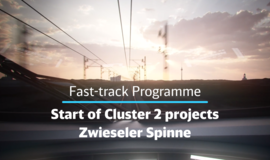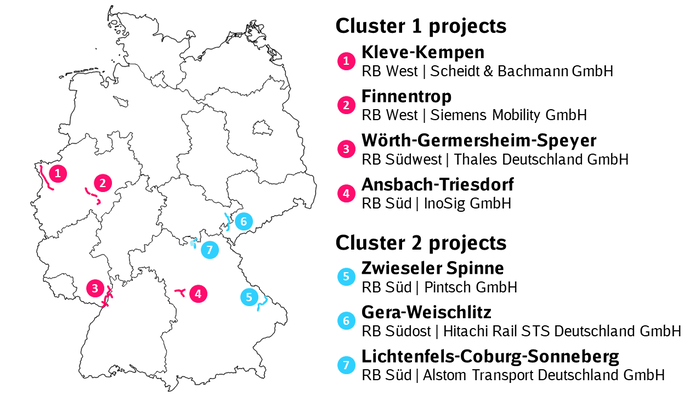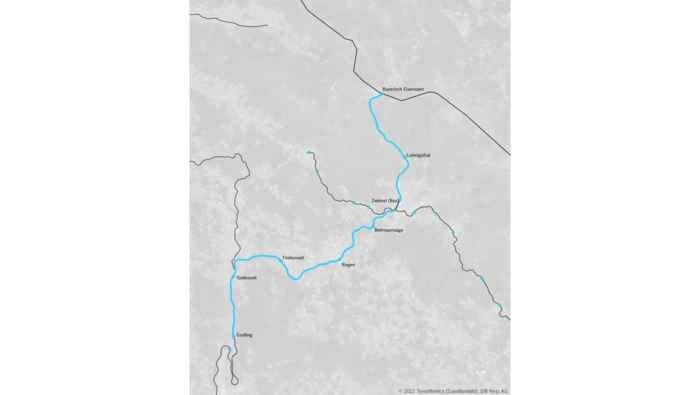
Fast-track Programme – Cluster 2 projects begin with Zwieseler Spinne
Modern signalling and interlocking technology at record speed: seven sections of Germany’s rail network are being modernised as part of the Fast-track Programme (Schnellläuferprogramm: SLP). Now begins construction of Cluster 2 projects – kicking off with Zwieseler Spinne in the Bavarian Forest.
With Cluster 1 projects of the Fast-track Programme (Schnellläuferprogramm: SLP) now in operation, the focus turns to Cluster 2 projects. Modern digital interlockings are being built on three sections: Zwieseler Spinne, Gera-Weischnitz and Lichtenfels-Coburg-Sonneberg. Zwieseler Spinne will be first, with construction work due to begin on 25 July, 2022.
Whereas Cluster 1 was carried out by established manufacturers, Cluster 2 is being realised by more unknown manufacturers. The SLP enables those not yet established on the German market to develop and implement digital signalling technology in line with Deutsche Bahn (DB) specifications.
The aim of this is to expand the signalling market in Germany. Ultimately, this furthers the Digitale Schiene Deutschland rollout – thanks to a greater pool of construction companies and expertise to draw from.
After several months in development, the new technology is being used for the first time in Zwieseler Spinne. In the next few months, engineers will install technology modules on the lines around Zwiesel – laying countless cables, setting up signals, modernising point machines and renewing level crossings. Six existing interlockings will be renewed with digital technology, enabling better control and more flexible movement of trains.
Digitalisation will make the Zwieseler Spinne section more reliable and efficient – thanks to fewer breakdowns, more flexible routing options and improved punctuality. It will also be easier and cheaper to maintain the line. Passengers will enjoy the benefits all the way from Grafling as far as Bayerisch Eisenstein.
The new technology goes into operation in late 2023. Before then, sections of the line will need to close for around 40 weeks. A rail replacement service (Schienenersatzverkehr: SEV) will transport passengers during this time – in a concept developed with the line operator, Länderbahn.
🡪 See full DB press release, 30.05.2022



